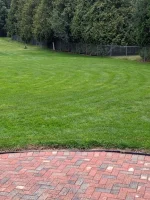Turf weeds can be either broadleaf (ie, dandelion) or grass (ie, crabgrass). There are annual weeds (complete cycle in 1 year), biennial (2 years), and perennials (many years). Weed seeds can remain viable in the soil for decades, until conditions become "perfect" and they germinate. I.E., soil disturbance and exposure to sun can activate old weed seeds to germinate.
There are soil active herbicides and leaf contact herbicides (some are both). Some herbicides are very selective and some kill everything. I.E., 2-4D will kill broakleafs and not grass while glyphosate (Roundup) will kill nearly everything.
Pre emergent soil herbicide only prevents weed
SEEDS from germinating and developing. It soaks into the ground surface to form a "cap" that prevents weed gernination development. Perennial dandlelions or quackgrass and bienials all with established roots will NOT be killed by a preemergnent herbicide.
@cmarshall78 - there ARE postemergent (crab)grass herbicides now. Quinclorac is an example:
https://www.canr.msu.edu/news/controlling_crabgrass_after_it_emerges (Hebron is a great place, but beware that it is south of Merrillville and poo flows downhill, LOL).
Maintaining healthy dense turf helps prevent weed seed germination and crowds out broadleafs to an extent. The IPM (Integrated Pest Mgmt) goal is to reduce the use of pesticides and fertilizer. Choose turf varieties robust for your conditions (soil, climate, etc.). Practice good cultural methods (don't bag clippings, mow correct height, water correctly). Fertilize correctly (timing, amount).
Accept some weeds in your lawn. The goal is to reach a point that you are not applying pesticides annually - maybe every several years if things get out of hand. IMO, shoot for "good enuf" and don't become a slave to your lawn. Moderation. It's much better for the environment and you.
Study your state's extension site for local education and practices.

